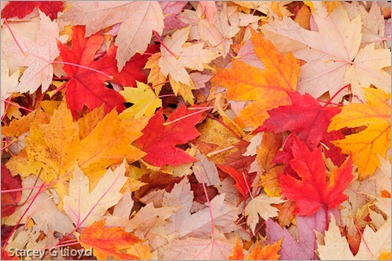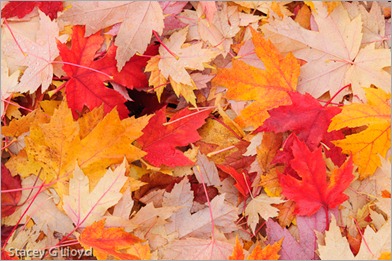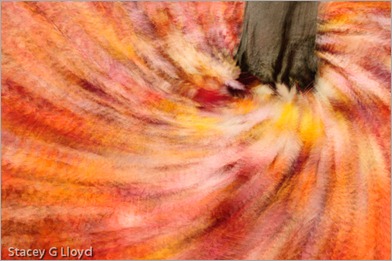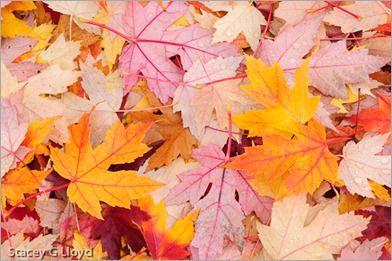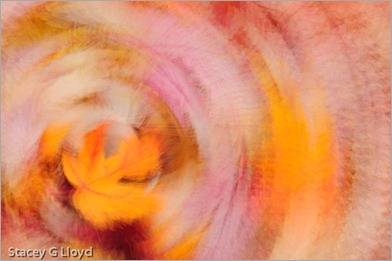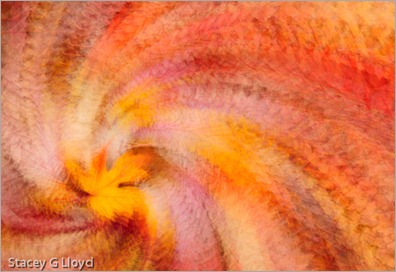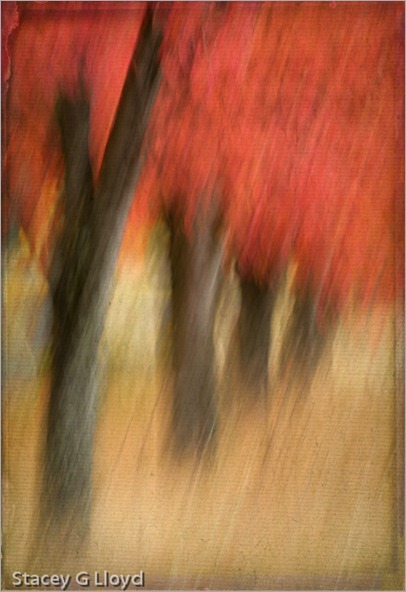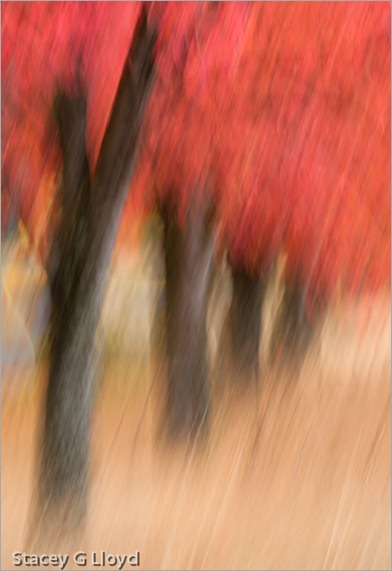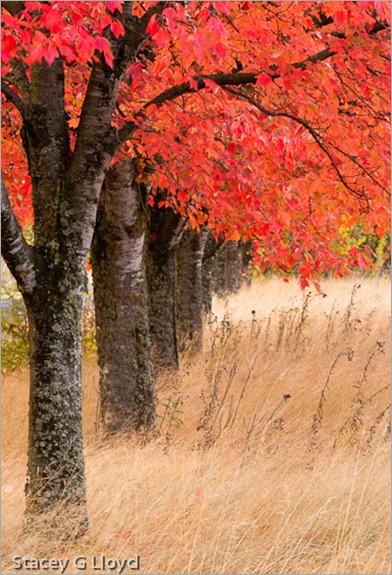While shooting the fallen leaves this past weekend, I decided to use them to illustrate some of the compositional elements I take into account while shooting. This is the first in a set of blog entries touching on composition. First i will look at black holes.
Take a look at the second image. Notice where your eye gets drawn – the black area in the middle upper left. That probably isn’t where you want the viewer to look. Compare this to the opening blog image where I simply placed a leaf in the hole – problem solved.
Ways of dealing with “black holes”
- Fill the hole as I did above.
- Shift the framing to eliminate the black hole.
- In post processing try to bring out detail in the hole by dodging it (increase local exposure).
- Clone something into the hole during post processing.
- Use the black holes or “negative” space as part of the composition – balance. I will touch on balance in a future blog.
Black holes are often a problem when shooting foliage and flowers, etc. This is especially true on sunny days where there are deep dark shadows. That is why cloudy days are often better for shooting these subjects (use a diffuser or look for shade on a sunny one). So instead of “dealing” with the black holes, you can avoid them altogether.

